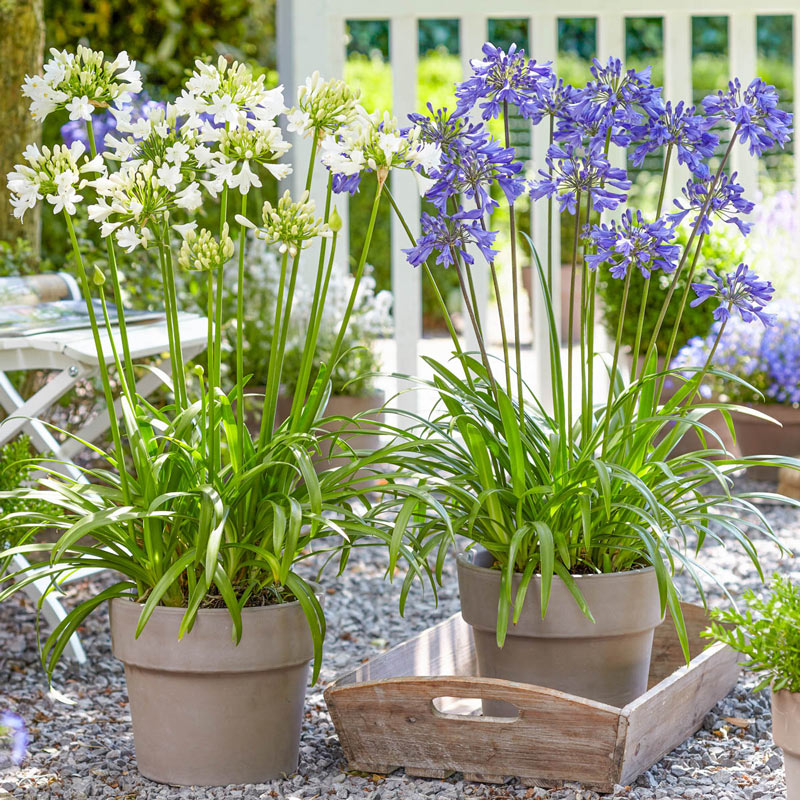Agapanthus Companion Plants: Perfect Pairings for Your Yard
Releasing the Secret to Successful Agapanthus Growing: Idea for a Flourishing Garden
In the realm of gardening, growing agapanthus efficiently requires a critical strategy that includes various elements of plant care. By understanding the subtleties of agapanthus growing, one can produce an environment where these plants grow and flower generously.
Planting Agapanthus: Finest Practices
When planting Agapanthus, appropriate dirt prep work is important for ensuring effective development and development of these gorgeous blossoms. Agapanthus, commonly called Lily of the Nile or African lily, grows in well-draining soil with a somewhat acidic to neutral pH level - Agapanthus. Before planting, it is critical to change hefty clay dirts with organic matter such as compost or peat moss to enhance drainage and supply important nutrients for the plants
To grow Agapanthus, choose a place that obtains full sunshine to partial color, as this will certainly advertise healthy development and bountiful flowering. Dig an opening two times the size of the plant's origin sphere and position the Agapanthus at the same depth it was formerly growing. Carefully backfill the opening with soil, pushing down firmly to eliminate any kind of air pockets around the origins.
Water the recently planted Agapanthus extensively and remain to keep the soil equally wet, especially during the plant's energetic expanding period. Agapanthus. Applying a balanced plant food once a month can further sustain the plant's development and flowering. By adhering to these best methods for growing Agapanthus, you can create a stunning display screen of these captivating blossoms in your yard
Ideal Soil Issues for Agapanthus
For optimum growth and growing success of Agapanthus plants, making sure the soil problems are optimal is important. Agapanthus likes soil that is abundant in nutrients, so integrating a balanced plant food during the expanding season can advertise healthy development and lively flowers.

Watering and Feeding Tips
To guarantee healthy and balanced growth and dynamic blossoms, appropriate watering and feeding methods are vital for effective Agapanthus growing. Agapanthus plants profit from regular watering, specifically during the growing period.
When it involves feeding Agapanthus, a balanced plant food with equal components nitrogen, phosphorus, and potassium can be used in the spring to advertise healthy and balanced development and flowering. Slow-release plant foods are optimal for giving nutrients progressively over a prolonged duration. Avoid over-fertilizing, as this can cause extreme foliage development at the cost of blooms.
In addition, integrating raw material like garden compost right into the soil can enhance nutrient degrees and enhance dirt structure, helping in the overall health of the Agapanthus plants. By complying with these watering and fertilizing tips, garden enthusiasts can guarantee their Agapanthus plants prosper and create stunning displays of blossoms.
Pruning and Deadheading Strategies
Proper trimming and deadheading methods play a critical role in keeping the health and aesthetics of Agapanthus plants, matching the vital practices of watering and feeding for successful growing. Trimming Agapanthus entails removing spent blossom heads, dead or yellowing fallen leaves, and overall shaping of the plant to promote much better development. Deadheading, the process of eliminating discolored flowers, not just enhances the plant's look however likewise encourages further blooming.
When deadheading Agapanthus, it is suggested to snip off the flower stem at the base Visit Your URL utilizing sharp, tidy shears. This process redirects the plant's energy from seed production back right into root and foliage development, advertising a much healthier and a lot more durable plant. Routine deadheading can extend the growing duration of Agapanthus and protect against self-seeding, which can lead to overcrowding.
In regards to trimming, Agapanthus typically take advantage of a light trim after blossoming to clean up the plant and motivate fresh development. Cutting down the spent flower stems and getting rid of any kind of broken or dead vegetation assists preserve the plant's vigor and general appearance. Nonetheless, it is vital to stay clear of cutting into the crown of the plant, as this can damage its wellness.

Protecting Agapanthus From Vermins and Diseases
Implementing efficient parasite and disease monitoring methods is essential to guarding the health and vigor of Agapanthus plants in farming. One common insect that affects Agapanthus is the Agapanthus borer, a caterpillar that tunnels right into the plant, creating damage to the leaves and flowers.
Along with bugs, Agapanthus are susceptible to illness such as root rot and fungal fallen leave areas. These issues can commonly be avoided by making certain you could try here correct drain and staying clear of overwatering. Affected parts of the plant should be quickly gotten rid of to protect against further spread if indicators of illness show up. Fungicides might additionally be used as a treatment action, adhering to the manufacturer's instructions carefully. By staying watchful and dealing with pest and disease here are the findings issues promptly, gardeners can help their Agapanthus thrive and flourish.

Verdict
In final thought, successful cultivation of agapanthus calls for proper planting methods, ideal soil problems, adequate watering and fertilizing, normal pruning and deadheading, and protection from illness and parasites. By adhering to these suggestions and techniques, garden enthusiasts can ensure a growing yard full of lovely agapanthus flowers. Agapanthus. Bear in mind to maintain consistent care and interest to detail to promote the health and wellness and long life of these stunning plants
When planting Agapanthus, proper dirt prep work is crucial for ensuring successful growth and development of these gorgeous flowers.Water the freshly planted Agapanthus thoroughly and proceed to keep the dirt equally damp, especially throughout the plant's energetic expanding period.For optimal development and growing success of Agapanthus plants, ensuring the dirt problems are optimal is important. When growing or hair transplanting Agapanthus, make sure the dirt is well-prepared to give the essential structure for the plants to develop themselves successfully. One common parasite that influences Agapanthus is the Agapanthus borer, a caterpillar that passages into the plant, triggering damage to the leaves and blossoms.